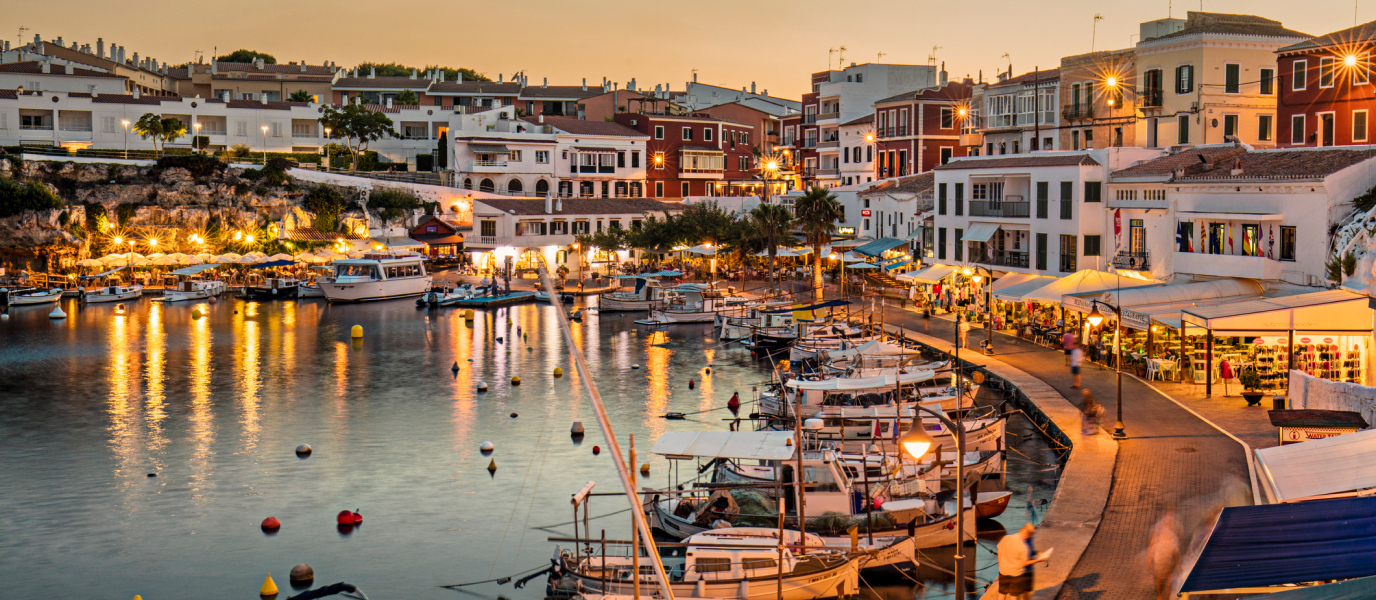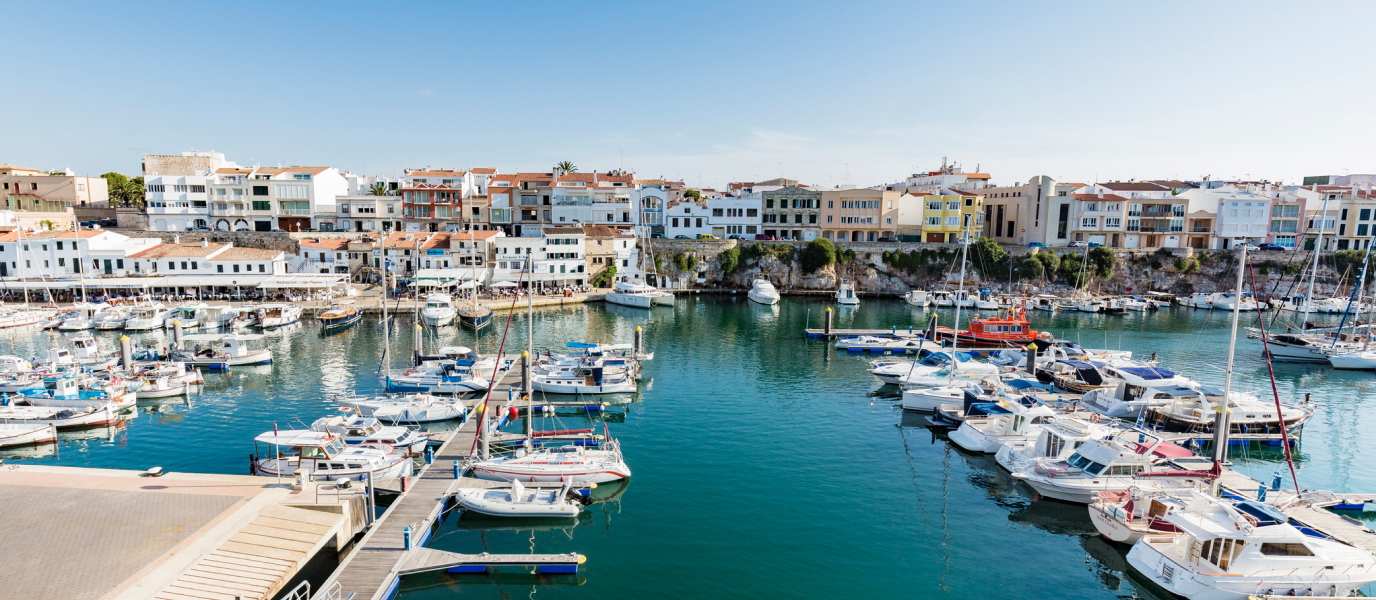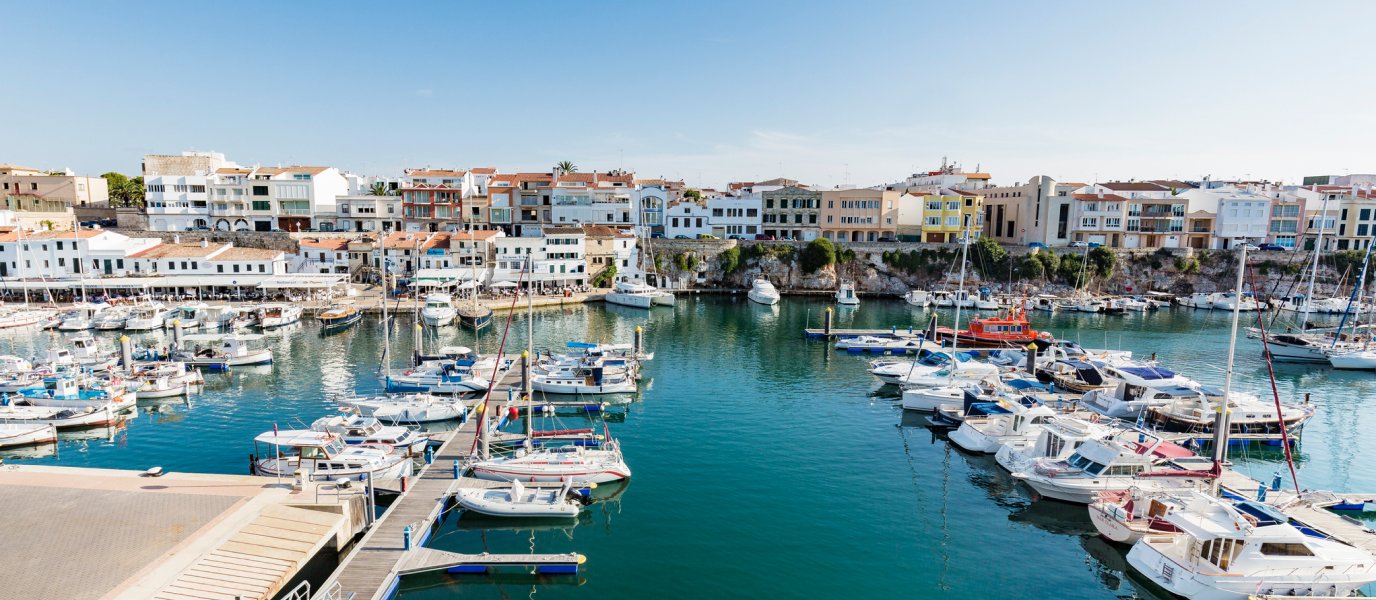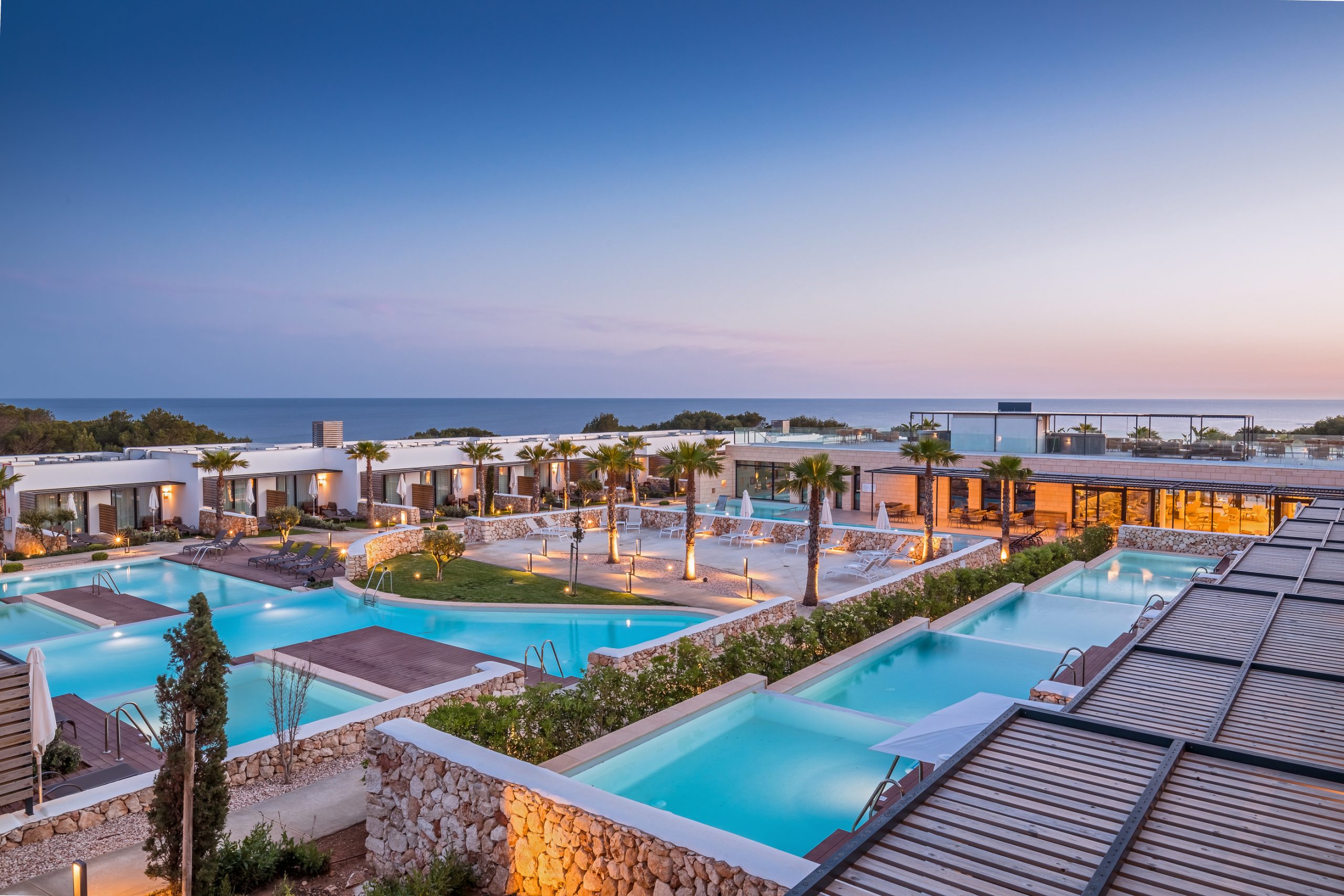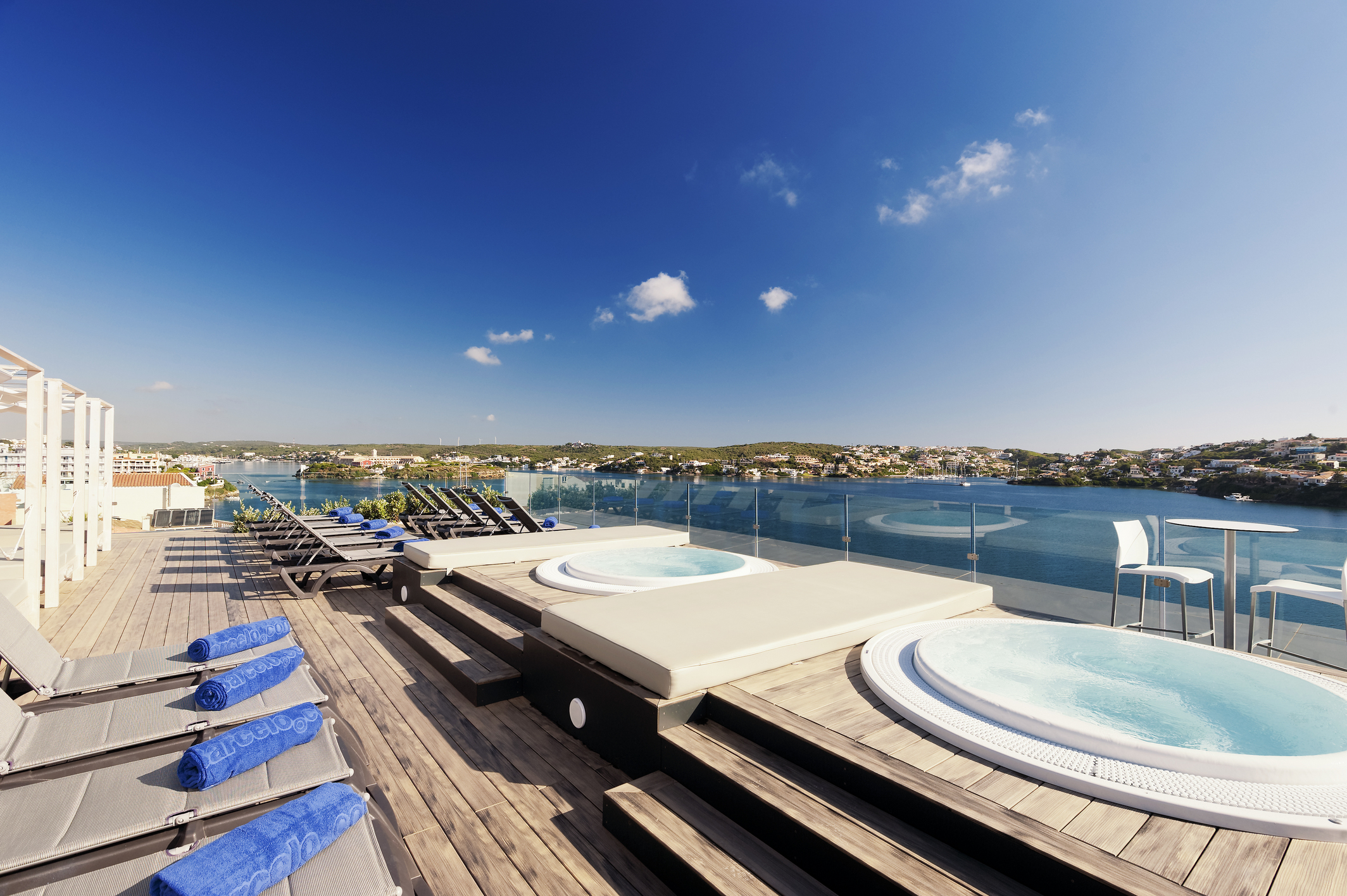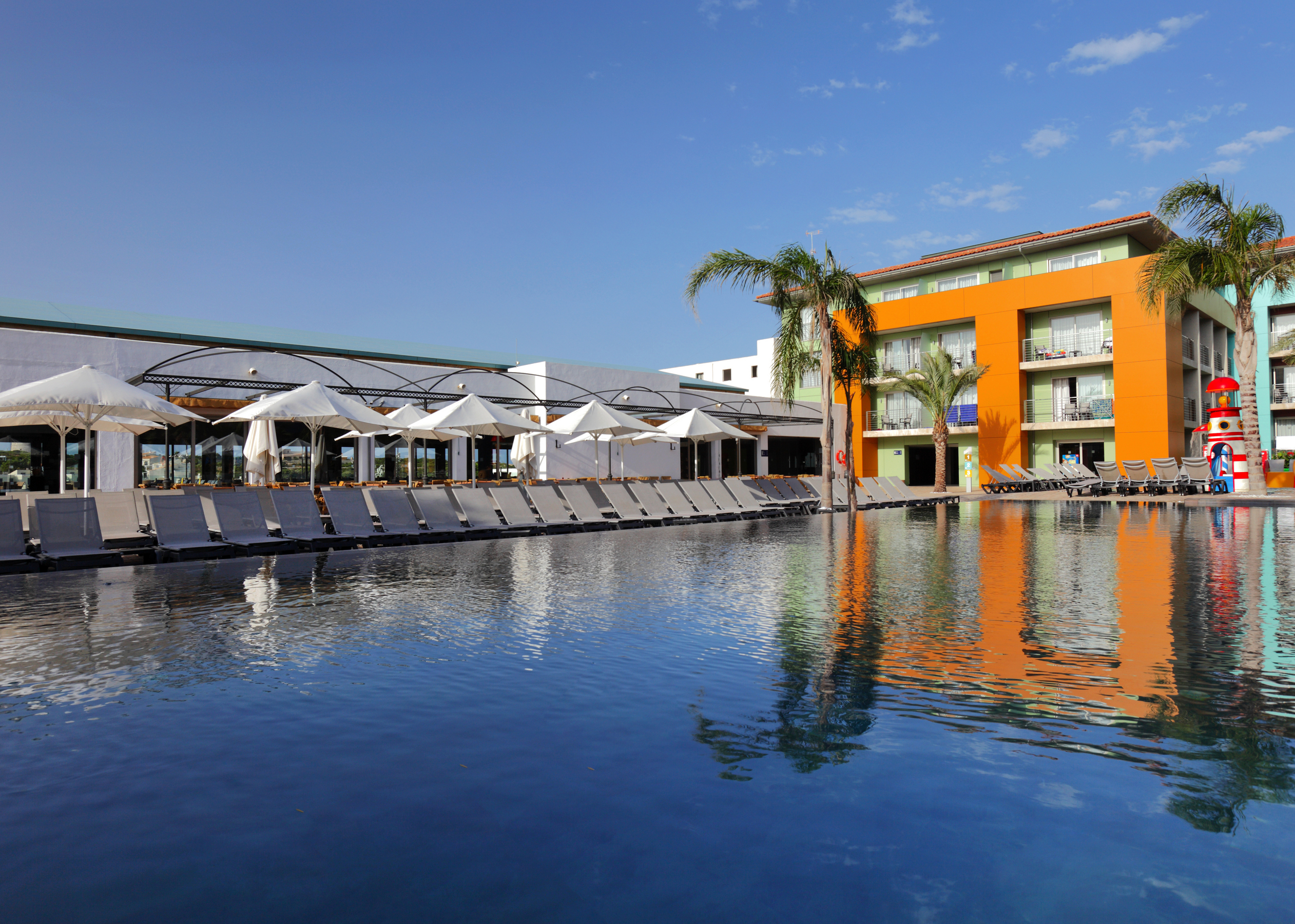The island of Menorca has been a Biosphere Reserve since 1993, which goes some way towards indicating just how much natural wealth Menorca boasts. The diversity of its Mediterranean habitats, including species exclusive to the island, is one of its hallmarks. It is also commitment to responsible sustainability, making the most of resources and conserving the environment for future generations.
The white sandy coves with turquoise water that is so intense you sometimes can’t work out where the sky begins is one of the island’s biggest draws. For those who love active tourism, its exceptional landscapes and natural parks are also among Menorca’s must-see attractions. And in addition to all this is the island’s vast array of heritage, having been the home of multiple cultures. Delicious gastronomy, marvellous sea beds for divers… Read on to find out all the reasons why your holiday in Menorca will be a dream come true.
BEACHES AND COVES IN MENORCA
Related experiences
Cala Galdana: a family favourite
We begin with the island’s most obvious attraction: its coves, which look like something straight out of a postcard. Not surprisingly, there are coves to suit all tastes and needs. Cala Galdana is perfect for families, since it has all the services and facilities you could wish for. Situated in the south, in the municipality of Ferrerías, it can be reached quickly by car or bus.
There are sun loungers, parasols, shops, beach bars and showers. Another of its plus points is the option of hiring pedal boats or kayaks to visit nearby coves or going snorkelling. You can also do a range of water-based activities at the beach, such as paragliding.
There are numerous restaurants nearby, such as Delit specialising in seafood paella, and Cape Nao Beach Club where you can have a light bite. Don’t forget about the Camí de Cavalls, a more than 180-kilometre-long footpath that goes around the whole of Menorca. The path links different coves and places by foot. Be sure to take the opportunity to walk along this historical path dotted with beautiful viewpoints.
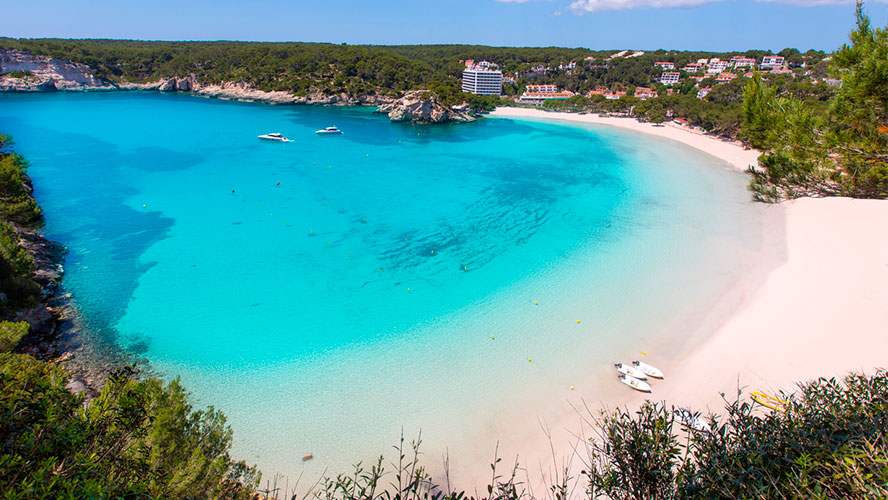
Cala Mitjana: a genuine unspoilt haven
Cala Mitjana is surrounded by cliffs and pine groves, in complete silence. This idyllic cove in the south of the island is perfect if you are looking to completely disconnect. To get there, you can leave your vehicle at a free car park or walk from Cala Galdana. The best time to visit is in the morning, as it gets less sun in the afternoon.
Jump off six-metre rocks or head to the small Cala Mitjaneta, a perfect spot for couples. Remember that the cove is completely unspoilt, so there are no services and you will need to bring your own food and drink. Hiking enthusiasts will be able to walk along paths through the pine forests or along the Camí de Cavalls.
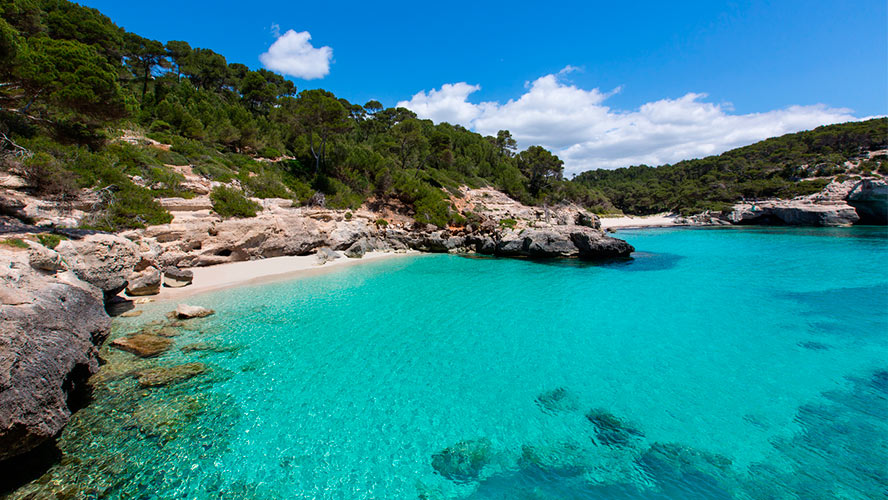
Cala Turqueta, vying for the title of most beautiful cove
Cala Turqueta is another one of the most outstanding coves in the south of the island. Although it is impossible to choose just one, the intense blue of Cala Turqueta is one of Menorca’s true spectacles. The beach is one of the island’s most sought-after, situated between Tambors and Na Forada. Space is limited and only the fortunate ones that come by foot are able to enjoy it.
Once again the beach, which is split into two by some rocks, is lined with pine groves and rocky ledges. Despite being unspoilt, there is a car park nearby as well as toilets and a picnic area. After leaving your car or motorbike, you will have to walk for about 15 minutes to get to the cove. In summer you can also get there by bus from Ciutadella. For fans of active tourism, the cove is where two stages of the Camí de Cavalls begin.
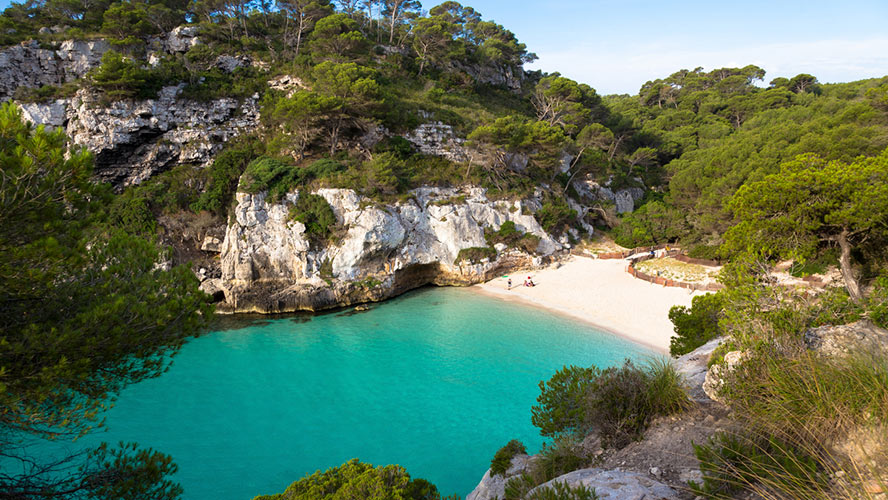
Cala Macarella, better than travelling to the Caribbean
Cala Macarella is situated just a short distance from Cala Turqueta. Here you will find a natural landscape featuring caves that have been eroded out of the rock. Except for a beach bar where you can have a bite or drink there are very few services. Thanks to this, however, nothing can detract from the charm of the coves.
If you continue on foot for about ten minutes, you will come to Cala Macaralleta, which is perfect for nudists, as it has some more secluded corners. One excellent idea is making a boat excursion to visit this cove as well as others that are nearby in the same day. This is one of the best things you can do in Menorca in order to see it from a different perspective.
In the high season there are buses that go there as well as two car parks. Alternatively, you can opt to take the beautiful Camí de Cavalls footpath from Cala Galdana to Cala Macarella, which takes less than an hour.
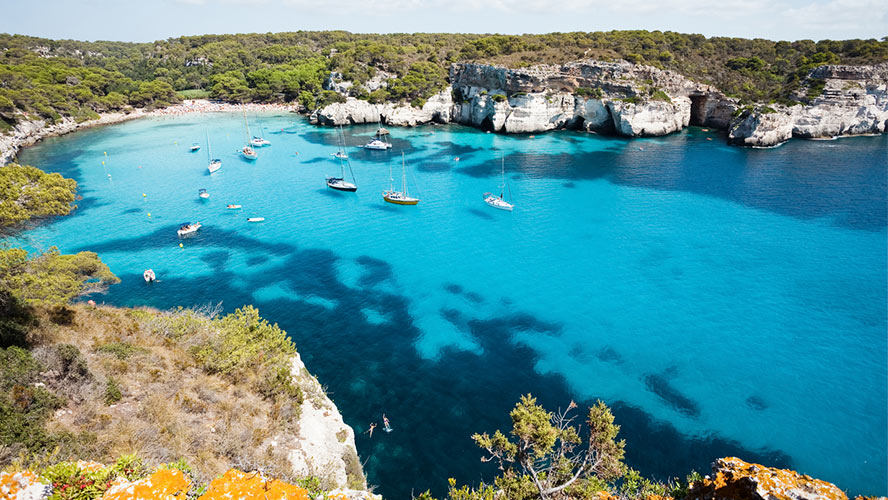
Cala Pregonda, the star of the island’s north
Although most of the coves are situated in the south of the island, the north is also home to various delights with different characteristics. Cala Pregonda has a very particular wild appearance. The reddish colour of its sand makes it look like it is straight out of a film set on Mars. This is due to the presence of pedra vermella, a type of red stone.
Cala Pregonda is unspoilt and complete isolated, which means it is one of the most spectacular beaches on the whole island, with an unchanging landscape. If you are looking for a haven of peace, this is your best bet, since it doesn’t get crowded and the beach is protected from the strong waves. There are different sections including rocky coves perfect for snorkelling, a more extensive beach and another beach on one of the adjacent islets with natural pools for diving.
You can only get there by foot and there is a free car park in Binimel-là. Afterwards you must walk for half and hour along the Camí de Cavalls with a few steep stretches. The views from the footpath are magnificent and well worth the effort. Don’t forget that it is a protected environment.
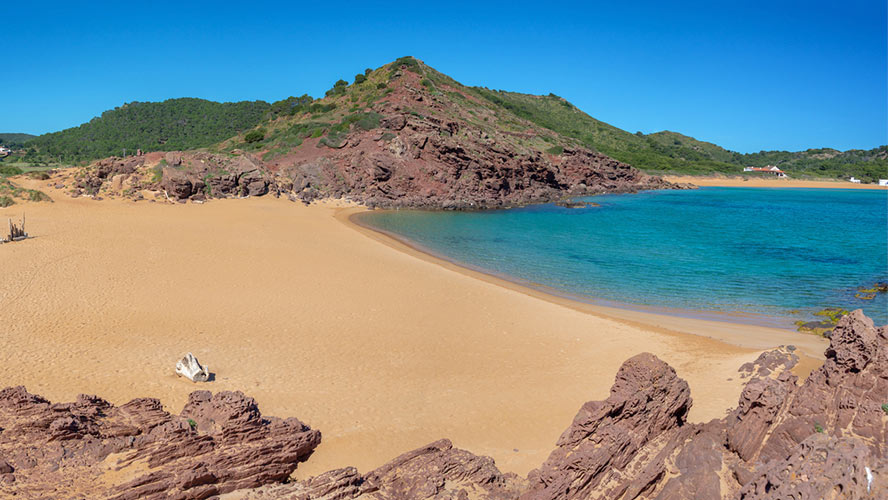
Cala Macarelleta, a nudist beach in Menorca
Cala Macarelleta is a paradise for nudists in Menorca. Situated in the same bay as Cala Macarella, it is likewise a picture-postcard destination, where people go to discover its beauty and a practically unspoilt natural area. White sand, turquoise waters, dunes everywhere you look, tall cliffs and pine trees touching the sand… You couldn’t ask for more.
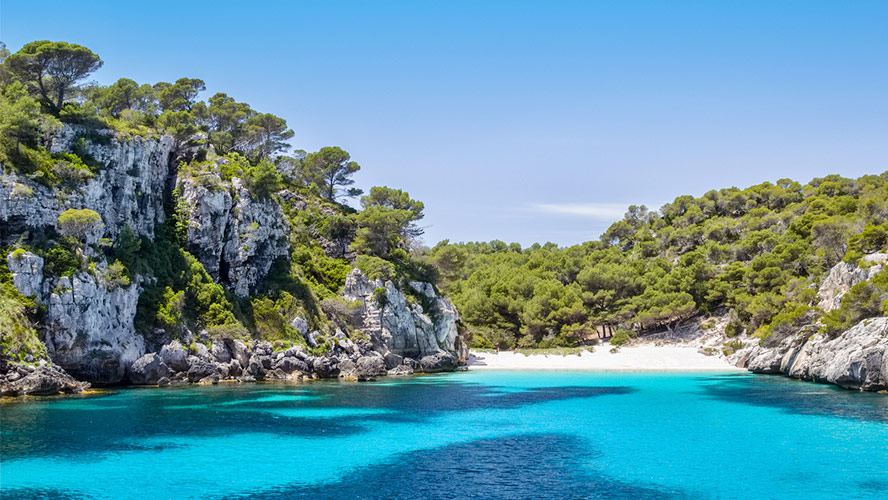
From Cala Macarella you can get to Cala Macarelleta by following the Camí de Cavalls in the direction of Cala Turqueta, as well as by going via the cliffs that link the two beaches, although you must be careful because the path is not easy.
At Cala Macarelleta you can go diving due to its rich sea bed, as well as kayaking and stand up paddleboarding thanks to the calm, transparent waters.
Playa de Cavallería, a natural paradise
Situated on the northern coast of Menorca, watched over by Cavalleria lighthouse, this is one of the largest beaches in the area. Practically unspoilt, the beach is surrounded by wild nature and therefore does not have any services. The beach is 500 metres long, has reddish-golden sand and is divided into two by the Ferragut reef. The section closest to the car park is sandier than the other, but both are great places to go snorkelling due to the richness of the sea bed. Bathing in the mud that accumulates next to the stairs leading to the water has become very popular, although it seems to not be beneficial to the beach’s natural conservation.
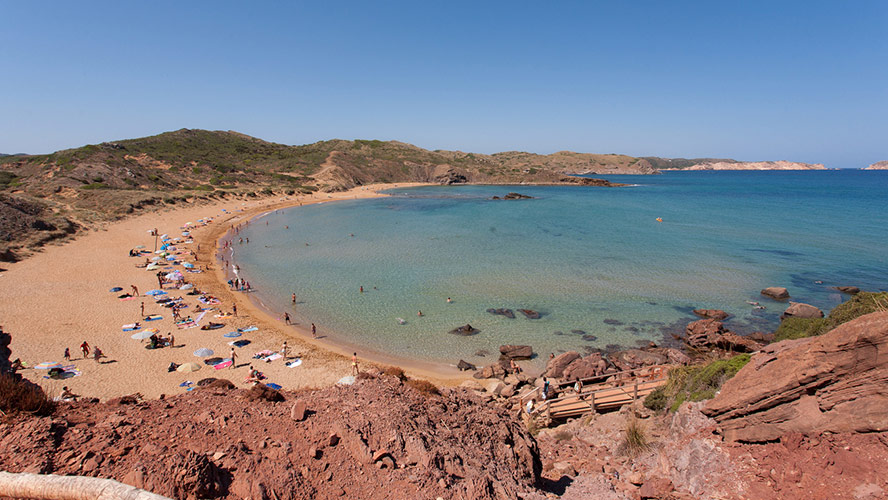
Cavalleria beach is very exposed to the wind and prone to jellyfish, so be sure to check the weather before planning a relaxing day out on the beach. One of its great natural assets is the dune system, which stretches for a kilometre towards the south. Not far from Cavallería beach is Cala Roja, a small beach that is both sandy and rocky and protected from the wind. It is less frequented by tourists.
Cavalleria beach is 30 kilometres from Mahón along the Fornells road and cannot be reached by public transport.
TOWNS AND VILLAGES IN MENORCA
Ciutadella, the medieval streets of Menorca
It is impossible not to fall in love with the narrow streets and old town of Ciutadella, a great example of the island’s cultural heritage. The best thing to do is leave your car at a car park and explore the city on foot. A good place to start your tour is the port to walk along the transformed medieval quay where there are numerous terraces.
Continue through Plaça des Born, along streets lined with craft shops and full of life. The Born obelisk is a symbol commemorating the defeat of the Turks. Stop at the Town Hall or San Nicolás castle on your way to Santa María cathedral, the most outstanding Gothic monument in Menorca and a leading example of the Catalan Gothic built in the thirteenth century.
There are also several coves and beaches nearby, such as Cala El Pilar. Menorcan cuisine is best represented in Ciutadella’s restaurants, such as Café Balear, Tast de na Silvia and S’Amarador, where you can sample the delicious lobster stew.
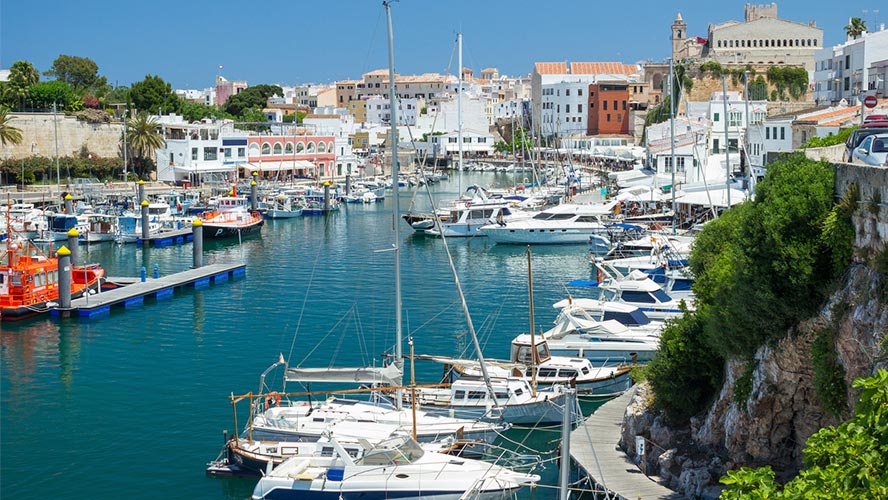
Binibeca, a bohemian atmosphere with a taste of the sea
The fishing village of Binibeca, where the colour white takes centre stage, stands out for its simplicity. One of its biggest charms is the air of tranquillity. The village was built in a uniform style to attract artists and intellectuals and invites you to relax and enjoy a gentle stroll in silence, respecting the privacy of the locals.
Binibeca is very close to Mahón, less than 10 kilometres away, which makes it easy to reach by car. In this highly distinctive place, interesting sights include its white houses with wooden balconies, the church, the main square and the seaside promenade.
The beautiful quay is another one of its most photographed places. If you want to savour the authentic flavours of the area, head to the restaurant El Faro, which specialises in rice dishes and has incredible views of the sea. Very close by are Binibeca beach and Cala Torret, which is perfect for diving.
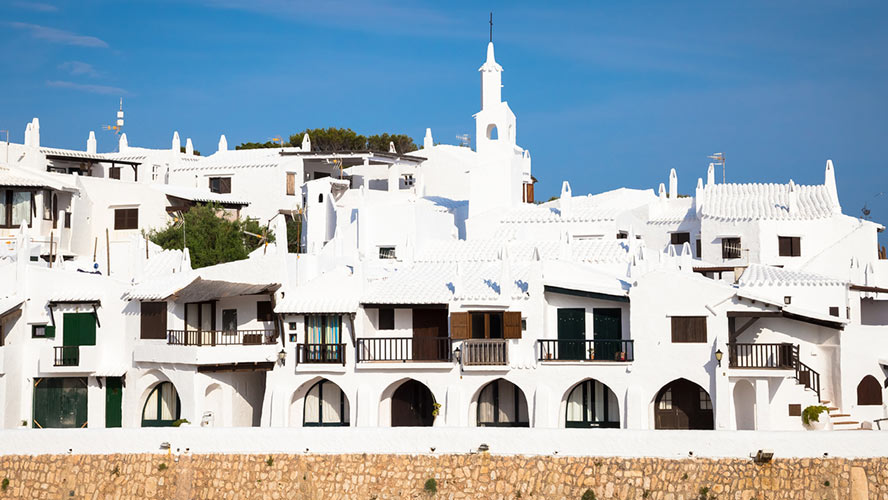
Son Bou, the best beach in Menorca
Son Bou is one of the most popular tourist destinations on the island, situated on the south coast, in the municipality of Alaior. The beach is full of interesting attractions, including a nature reserve, and is perfect for couples or families. Due to its length, its fine sand and transparent shallow waters, as well as easy access and free car parks, it is also ideal for those visiting with children.
The beach has a large number of services including beach bars and chill out bars. In the western part of Son Bou the beach is quieter and suitable for nudism. You will also be surrounded by unique monuments, such as the paleo-Christian basilica of Son Bou and Torre d’en Galmés, the largest Talayotic settlement in Menorca.
In Albufera de Ses Canessies you can also observe different bird species. Nearby there are different Camí de Cavalls routes and good restaurants such as Es Forn de Torre Solí Nou, housed in a former farmhouse, which is perfect for a romantic evening out.
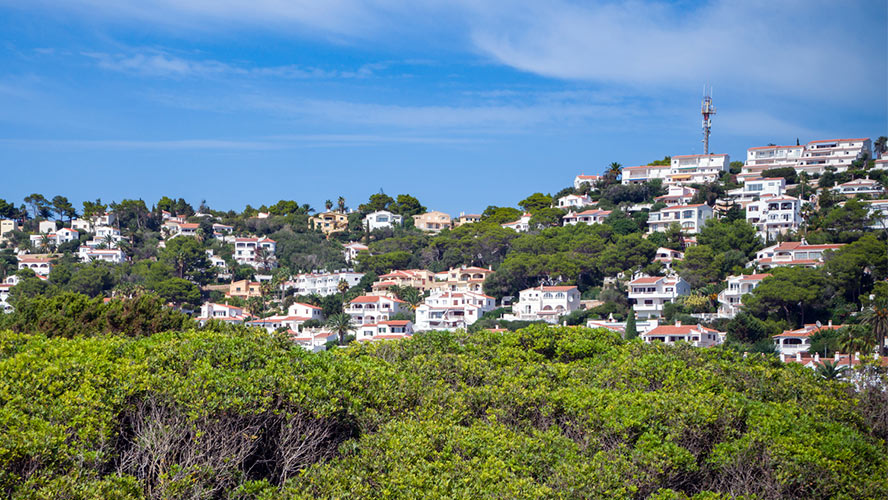
Fornells, the best lobster stew in Menorca
Although gastronomy is one of the strong points of this town, it has much more to offer, since it is one of the most charming places on the island. Fornells is a seaside town where life still revolves around the port, which has a natural bay. The town is situated in the north of the island, around 30 kilometres from Mahón.
Its Mediterranean-style layout makes for a beautiful, brightly-coloured image. In the town you can visit San Antonio castle or Cavallería cape, a natural area set between cliffs that is without a doubt one of the most unique natural places in the north of the island. You can also see the nineteenth-century Fornells tower or visit one of the nearby coves.
The town’s main attraction, however, are its restaurants specialising in one of the star dishes of Menorcan gastronomy, lobster stew. Restaurants such as Es Cranc, Sa Llagosta, Can Tanu and Sa Proa serve different versions of this delicacy.
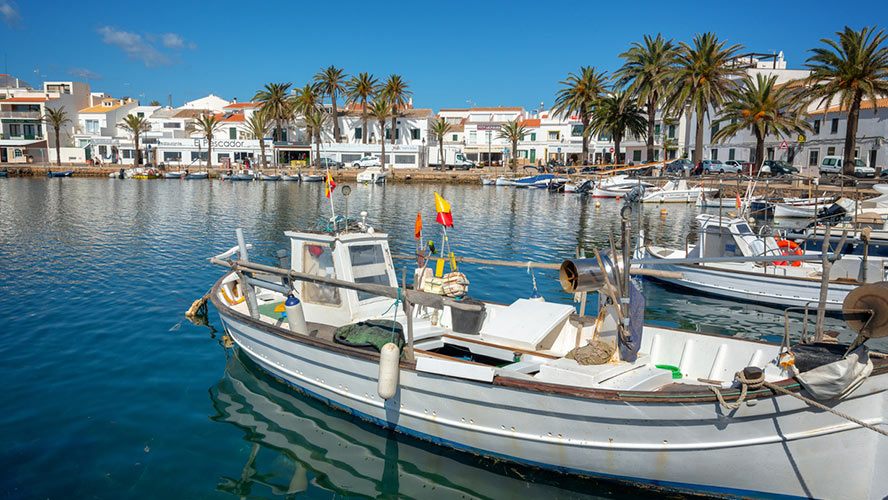
MUST-VISIT PLACES IN MENORCA
Fornells tower: the island’s northern defence
Fornells tower, as previously mentioned, is one of Fornells’s most interesting attractions. A great defensive bastion, it was the last one to be built by the English before abandoning Menorca. As well as being one of the best preserved towers, it is also one of the largest.
Restored after years of neglect, today it houses a museum and a terrace that has impressive panoramic views of the bay of Fornells. The tower is a true witness to the past, a time at which it was necessary to defend against external attacks and incursions.
Children will especially enjoy the tower, as they will be able to learn about its history while having a good time. The tower is a must-visit in the north of the island.
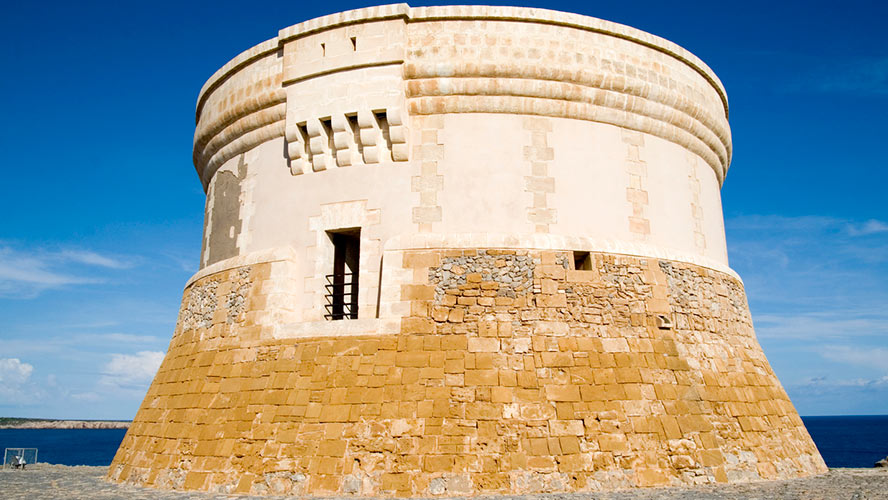
La Mola, the fortress that protects the port of Mahón
La Mola is the peninsula located in the easternmost part of Spain. The nineteenth-century fortress situated here is one of the largest walled enclosures in Europe. One of its most impressive features its its excellent state of conservation.
In addition to the spectacular views of the port of Mahón, La Mola is a Special Protection Area for Birds. This means that you can enjoy both the landscape and the defensive constructions found here. The indisputable star of the show is the defensive fortress built by Isabel II, whose incredible walls and viewpoints will delight the youngest members of the family.
The underground galleries will also feed the imagination of children and grown-ups alike. Be sure to visit to discover the fascinating history of La Mola on a guided tour. It is also possible to do night-time tours or tours with electric vehicles, as long as you book in advance.
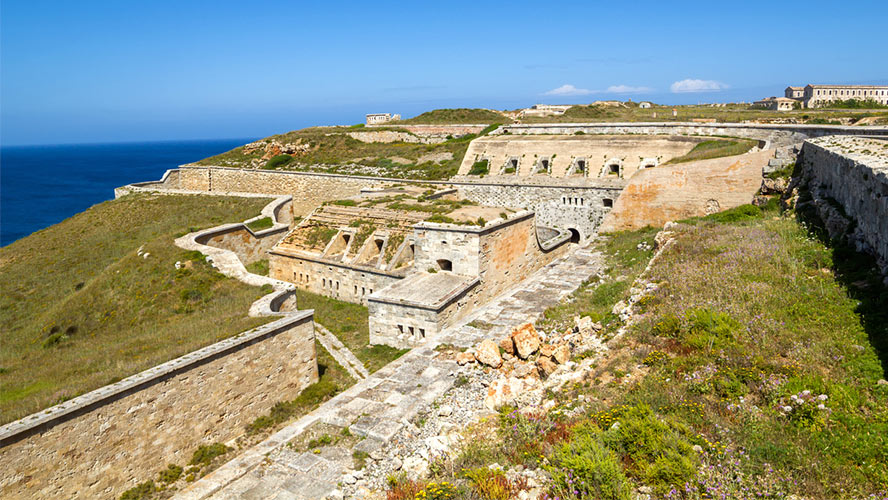
La Naveta des Tudons, discover Talayotic culture
La Naveta des Tudons is the oldest building in Europe and in excellent condition. A type of funerary construction, it was built using only the dry stone method around 1200 BC. Its unique upturned boat shape is one of its distinguishing features.
After excavation work, human remains were found, from which it was possible to deduce its use. Talayotic culture is exclusive to the Balearic Islands, not having existed anywhere else during prehistoric times. It is for this reason that the construction is so unique and has such notable significance.
Menorca is like an open-air museum, since the remains of this culture as well as others can be found all over the island. A visit to this site is a real must. There are over 30 archaeological sites that tell the story of the island’s ancestral past. The Naveta des Tudons, situated between Ciutadella and Ferrerías, can be easily reached by car and is well signposted. A visit to the site is an excellent thing to do with the whole family.
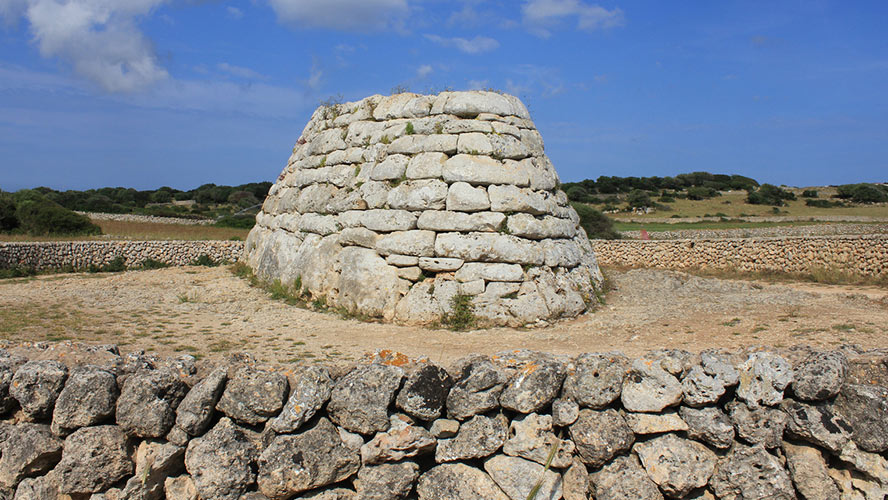
Favàritx lighthouse, light in the north of the island
The history of Favàritx lighthouse, built in 1917 and opened in 1922, has its origins in the many shipwrecks that occurred in the area. The most famous were that of the steamboat Isaac Pereyre in 1906 and the ship General Chanzy in 1910. The lighthouse is situated in the middle of s’Albufera des Grau, on Favàritx cape, in the north of Menorca.
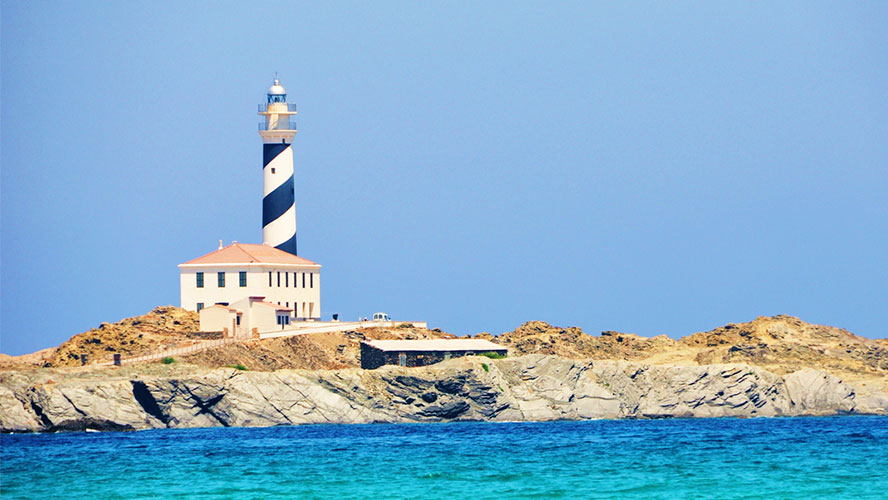
And is guarded by low black slate cliffs, which some say look like a landscape straight out of hell. Next to the lighthouse is a small natural lake, Cós des Síndic, which usually forms after storms and serves as a resting and feeding place for birds. According to popular legend, if you walk under the full moon through the puddles that form next to the lighthouse, you will be invaded by energy, strength and fertility.
As of 2018, the lighthouse cannot be reached by private vehicle from June to September.
NATURAL AREAS IN MENORCA
Monte Toro, all of Menorca at your feet
Monte Toro is considered the best vantage point that you will find on the island. As the tallest mountain on the island, you will be treated to some breathtaking moments. Climbing up to the summit is suitable for the whole family, since it reaches a height of no more than 350 metres.
Monte Toro is unrivalled in terms of height, so views from the top are priceless, with no visual obstructions whatsoever. It is also a place full of legends, as it was believed to be guarded by a bull in ancient times.
The climb is easy, although you can also go up by car or bicycle. The best way to ascend is by foot on a pleasant walk. And what could be more romantic than a beautiful sunset with the Menorcan landscape as a backdrop. Don’t forget to visit the sanctuary of the Virgen de Monte Toro, the patron saint of Menorca. At the foot of the mountain is the beautiful village of Es Mercadel.
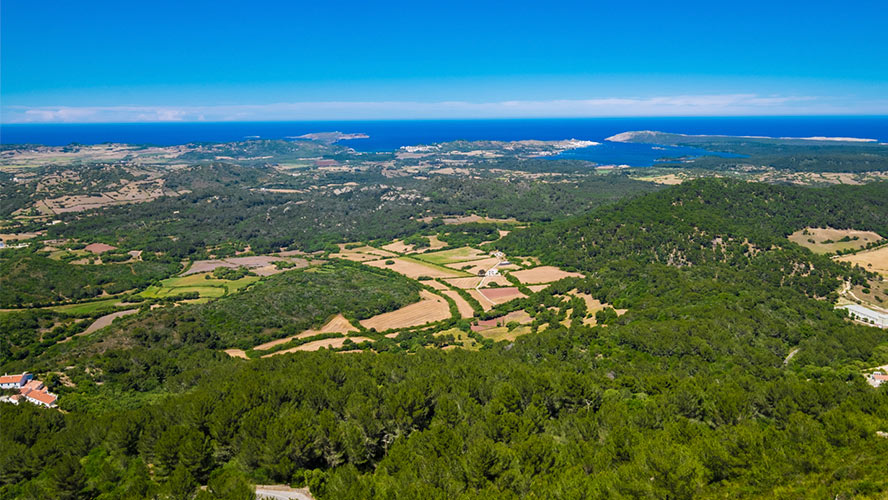
Cova d’en Xoroi, finish your day with the best sunset
Any time is a good time to visit Cova d’en Xoroi, since it is situated in a spectacular setting: a 30-metre-high cliff to the south of Cala en Porter. During the day it functions as a terrace and viewpoint while at night it is a meeting place and live music venue.
There are numerous natural balconies where you can have a drink. Dusk is the most popular time of the day at the caves. The cost of admission usually includes a drink.
At night, Cova d’en Xoroi has become a fashionable spot where you can listen to music, especially jazz bands. Later on it becomes a nightclub where you can dance until your body can’t go on. If you can, try to see it from a boat on an excursion taking in different coves – it will be a great way to round off your day in Menorca.
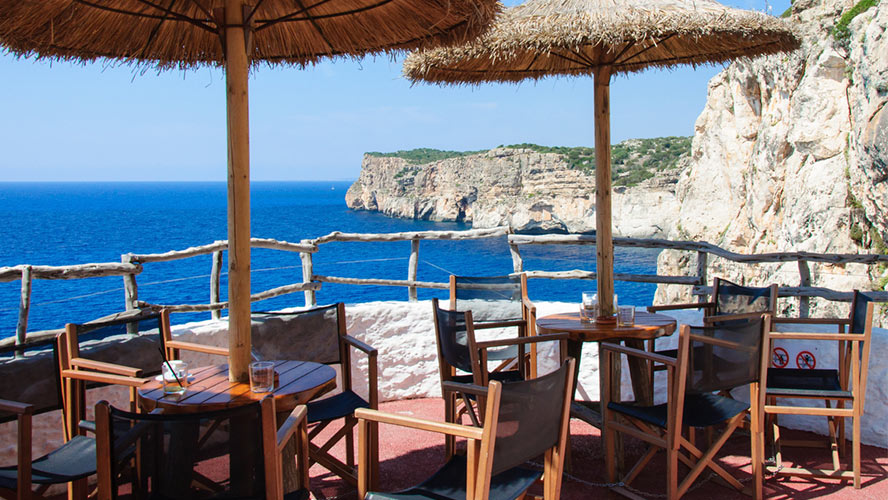
Pont d’en Gil, an arched rock next to the sea
A fantasy of nature, a place to get your fill of taking photos… Pont d’en Gil has been carved out by the force of the waves and very few can resist making a stop and enjoying this spectacular natural area in Menorca, located next to Ciutadella. You can reach the rock by foot (from Cala en Blanes) or by bike (via the Camí de Cavalls) but the best views are, of course, from a boat.
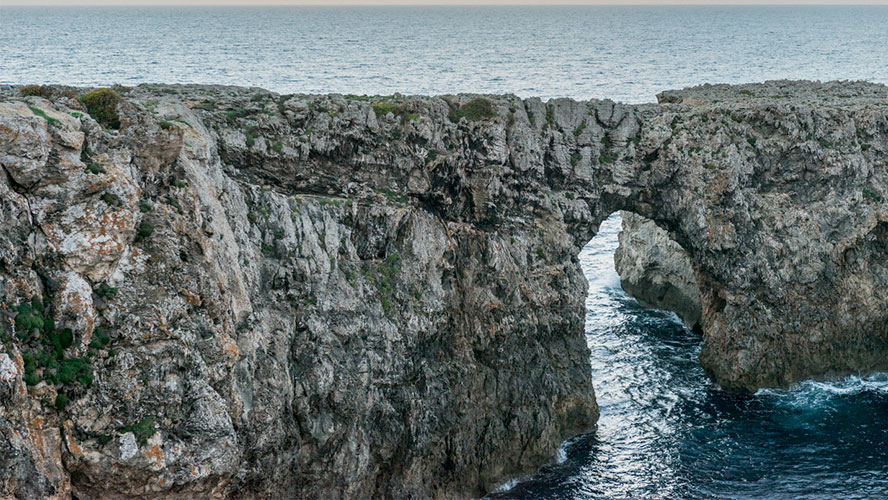
From this whim of nature, which small boats sometimes dare to pass through, you can also enjoy incredible sunsets.
Cova des Coloms
It is said that Santa María cathedral in Ciutadella has a worthy rival in the Cova des Coloms. The reason why? This enormous natural cave, located in Binigaus ravine, offers visitors a gigantic rocky cavity standing 24 metres high, 15 metres wide and 110 metres long. All in all, it is a spectacle to behold, which is very similar to that of large places of worship. Moreover, numerous archaeological studies have shown that the cave was used as a burial site by prehistoric Menorcan settlers. It is for these reasons that the Cova des Coloms was declared a Cultural Interest Site in 1966.
To get there, you must head to the village of Es Migjorn Gran, situated in the south-central part of Menorca. Once there, take the path from the cemetery towards Binigaus beach. Signposted with red and yellow markers, the path soon forks off: the right-hand path leads to the beach while the left-hand path ends at the discreet entrance to Cova des Coloms.
Albufera des Graus
This natural park covering an area of 5,000 hectares is Menorca’s quintessential green lung. Situated in the north-eastern corner of the island, Albufera des Graus was declared a Biosphere Reserve by Unesco in 1993. By respecting visiting rules, which are mainly designed for the park’s conservation, you can enjoy a wide range of activities. The lush landscape, with a diverse range of environments – wetlands, agricultural land, forests, beaches and islets – is rounded off by the presence of archaeological remains from the Talayotic culture, such as those of the Sa Torreta settlement.
However, the best way to begin your visit is by going to the Rodríguez Femenías Interpretation Centre, a tourist information point from which two of the three routes designed for hiking in the park’s interior start. The other, designed for the hottest days due to its proximity to the beach, starts from the nearby fishing village of Es Grau.
Two other highly-recommended excursions in Albufera are Colom island, which can be reached by kayak, and Favaritx lighthouse, set in a landscape made up of black slate and wild cliffs.




































































